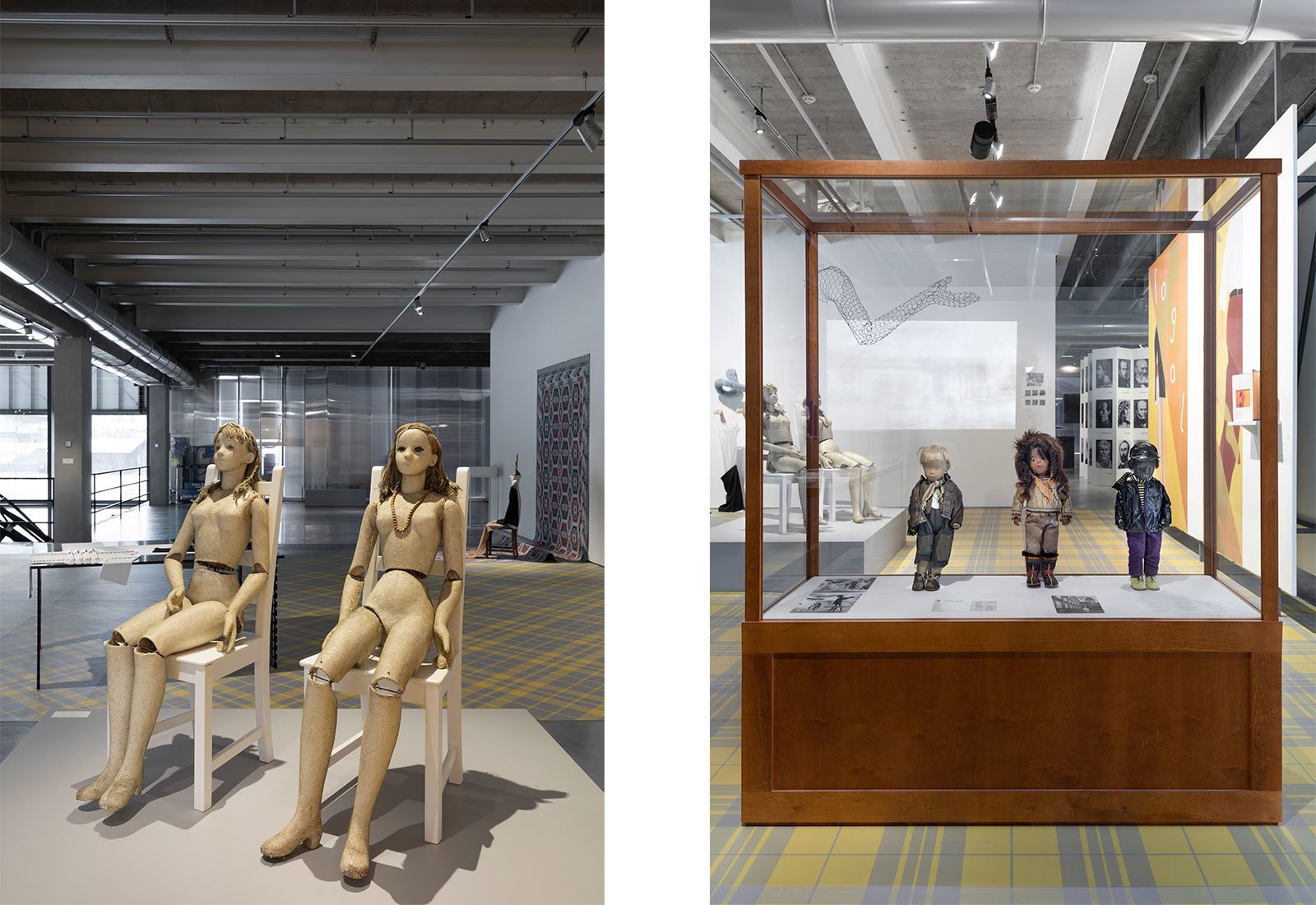By Women, of Women in the Mannequin Industry

Women are of particular interest for the project: those who flourished within the industry (Cora Scovil, Martha Schön), infiltrated it from unusual backgrounds (Mary Blair, Käthe Kruse) or subverted it (Lynne Hershmann Leeson). Two marionette mannequins by Sasha Morgenthaler, seated side by side, are key pieces in this section, as they embody so many of the important topics of the exhibition.
The relationship of female artists to mannequins is a complex one. The female mannequin carries a psychological load because, in embodying the idealized state of feminine stasis, it is so often used as a stand-in for woman herself. In the hierarchical system of art, the appropriated object—in this case the mannequin—must be characterized as naïve, ignorant of its own agency, and unable to talk back.
Any use of mannequins is colored by the legacy of the Surrealists, and their chauvinism becomes subverted in women’s hands. However, no matter an artist’s gender, the assumption that you can bestow prestige on an object through artistic intervention (an assumption which presupposes that value was absent in the first place) mimics a power dynamic that places fine art above the applied arts, and by extension male over female subjectivity. Because mannequins are inherently artificial and therefore, in modernism’s reasoning, fundamentally female, there has always been an unease around male shop dummies. They are in a double bind of extremes; on one side being considered “too gay” and not “manly” enough, and on the other appearing like menacing loners.
Historically, the job of window-trimming had to be actively staged as masculine, if only to enforce the gender roles of susceptible female consumers on one side of the glass and the educated men manipulating their desires to lucrative effect on the other. Mannequins have often been used as stand-ins for the empty-headed “shop girls”.
Mary Blair was an illustrator for Disney, Morgenthaler and Kruse were dollmakers, Leeson was a multi-media artist. Because window dressing had to be “masculinized” with schools and certificates and employment rules about working at night, many of the most brilliant female window dressers had to come to the job from a different direction and not through official employment.